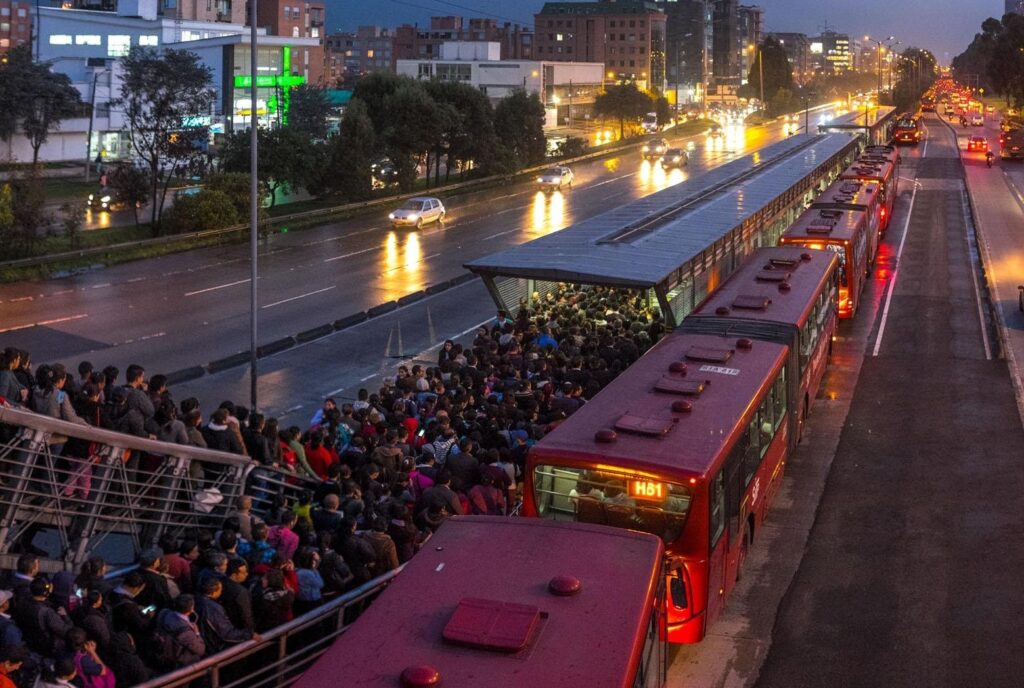The below article was written by a long term friend of Coseco and expert in the business of public transport for long….(Yes, almost as long as we are).

Shubhrendu Khoche is the Senior Advisor at MEDICI Global. As General Manager for the Asia-Pacific… Read more
From just paying for your train or bus ride to the whole commuting experience.
It seems counterintuitive to talk about and to analyze the transit payments sector at a time when most metro trains, city buses and other public modes of transportation are running at their lowest capacity in years, and the majority of daily riders for work, studies, or leisure are at home maintaining social distance norms.
But this stillness gives us the vantage point from which to observe, analyze and predict future trends of this killer app that made contactless cards feasible for contactless payments, generates amongst the highest contactless transaction volumes, is a big shaper of mainstream consumer behavior towards payments and commerce, the source of big pools of data linked to the movement of residents and their patterns throughout much of the 24 hours and also one of the largest collection of out-of-home advertising billboards in the heaviest footfall corridors in our urban sprawls.
Rapid urbanization and the rise of city-states as the core unit of economic activity in this century has resulted in higher congestion and pollution, and consequent fall in the quality of life for city dwellers. Even if private vehicles find a resurgence in the recovery phase next year, public transport will likely continue to be the primary option for many of our megacities. As we battle the exceptional situation in 2020, there are more than 60 cities, many in developing Asia and Latin America, that are building out some variant of a mass transit metro or bus network over the next three years. That’s an increase of roughly 80 million daily riders in five years from now, by 2025, as these public transport projects go live and scale-up. Or, if you like bigger numbers, around 30 billion new payment transactions annually. To put that in the perspective of a baseline, the People’s Republic of China alone has more than 30 cities with live mass transit systems.
In this pause, we will observe and analyze with the help of our guest speakers in coming weeks—each of them a proponent and expert in representing the industry value network—that transit will eventually rebound; mobility-as-a-service will likely still be the new norm and paying for your ride will be transformed into a smarter, simpler mobility experience as online giants start partnering retail banks, transit authorities, and operators to create a digital commerce-like experience in this online to offline to online commuting experience for riders that will entail a fundamental business model disruption.
Problems, gradually getting resolved
Setting up and operating a transit fare collection system has traditionally been an expensive capex-driven proposition that had to cater to a diverse and fragmented set of services, routes, acceptance points, and access control mechanisms. The cost of the fare collection system, i.e., of being able to issue, check, and consume ride tickets to commuters, used to be 14%–18% of the average price of a ticket.
With the advent of new players getting interested, the growing number of cities worldwide adopting such transit payments systems, advances in cloud computing, secure and smarter portable computing available for less, and overall, the maturing scope and scale economies of the industry, these equations are changing. This has huge implications for retail banks, FinTech firms and their investors, digital giants, and regional digital platforms.
It used to take at least a couple of years to deploy a fully operational transit fare collection system in a mass transit deployment. The business and technology were geared towards treating these as block boxes over a long contractual duration obviating periodic updates to the system and also did not benefit from the recent advances in open APIs and flexible modeling of services that allow partner third parties to benefit or contribute to the deployment—as a result, integrating with any external interface like a website or a mobile application used to be difficult, time-consuming, and expensive. This has changed in the last five years and has gained momentum, especially in emerging markets.

The speed of payment transactions was paramount given the focus on moving rush hour traffic through the gates and any innovation used to break this holy grail threshold invariably. Advances in internet data connectivity and on-device computational capability have started to make this less of a bottleneck.
Megatrends
- The old-world business model of upfront system license, annual maintenance, and big change requests awarded in long multi-year bids from transit authorities to large fare collection SI firms is getting transformed. New B.O.T. models with a revenue share of farebox revenue between the public and private sectors in a Public-Private Partnership (PPP) framework will gain ground in emerging markets. Clearance & settlement will tend to get simpler, more mainstream, and hence, less expensive as a fraction of the total transit payments system capex+opex.
- The cost of putting up and running a fare collection system as a fraction of the fare value collected each year will go down as newer revenue streams from advertising, loyalty programs, content deals, and anonymized, aggregated data are signed with transport operators or their partners from the banking and technology sector. This goes far beyond the card co-branding games of yesteryears.
- As commuters’ portable devices and contactless cards become smarter & more powerful and the back-end servers or cloud infrastructure mirrors this growth, transit payment acceptance terminals, i.e., the bus validators and MRT access control gates plus reader terminals can become dumber and hence less expensive, i.e., the fare media and payment back-end get more intelligent, so the costly terminals need less of it.
- More commuters will use multiple modes and multiple hops to make their intra-city journeys and the share of combo-rides, where a personal vehicle or a ride-share service is used together with a train or bus ride, will increase. The point of purchase of rides will move away from the ticket counter or kiosk to the front page of your smartphone, whether you consume the ride with a contactless card, a smartphone, or a fitness band. The ticket machine will be on your phone.
- Mobile wallet providers and digital giants are starting to engage and build businesses in the transit payments transactions field more aggressively as they start appreciating the size and frequency of these transactions and the opportunity to engage commuters in that half an hour or longer of dead time when one is (pretending to be) occupied with one’s phone or closing one’s eyes to catch a nap. Transit will become one of the biggest O2O stories for online marketplaces and wallet providers adding offline merchants (i.e., transit operators)
- More cities will start supporting options to pull money from riders’ bank accounts, on a per ride or monthly account-based charging model, based on much simpler but a lot more dynamic fare tables of origination and destination points, or may even selectively go to a subscription model (season pass on steroids that are richer and likely a part of local cross-industry subscription package offering credits for content, fitness & active lifestyle, food delivery, and ride-sharing alongside rides on city trains and buses).
- National IDs where available, and then digital IDs, will gradually become a bigger part of the transaction mechanics and of solutions balancing privacy and convenience, simplicity, and trust.
- It is telling that some early pilots of retail central bank digital currency, like China’s DCEP, are also testing bus fare payments as a use case. We can expect that transit payments will continue to be a lead area for implementation as retail CBDCs get launched and scale in the next five years.

Opportunities
Transit payments represent one of the biggest set of transaction opportunities for credit/debit products in developed markets and pre-paid/pull payment products in emerging markets that will see interest from mobility & smart city startups, their early-stage investors and global digital giants alike, seeking to boost their transaction frequency and volume. If the transit operators move smartly, not only will they be able to reduce the cost of operations but also gain from a share of value-added services revenue introduced by partners ranging from retail banks to digital wallet companies and telcos. More importantly, they will still be sitting near the center of the new business configuration for their commuters.


